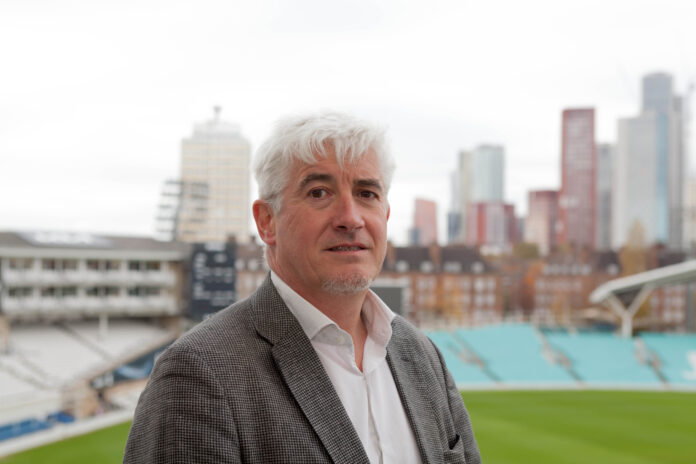Graham Brown has a bee in his bonnet, he may need to keep it there to preserve that particular species but figuratively speaking, this industry PR and marketing specialist has campaigned enough, heard enough and is one of an ever-growing band of industry thinkers that have seen enough statements of intent and would like to see them transferred into action. We asked him to explain:
“To know and not to do is not to know.“
“It’s an old adage my dad planted in my brain as a young man – but it seems to have been one that’s haunted the world and progress of the green movement across my life-time (and that’s some time now!).
It’s been status quo for decades, with environmentalists stuck in an intransient trench, where it felt like we were wading through treacle. In wider industry and politics, the message of global warming and looking after our world didn’t suit the traditional economic model of ‘produce, sell, produce more, sell more’, irrespective of the consequences; as long as the corporations made their money. They ignored the science and funded client deniers at the highest level.
Then Sir David Attenborough and Greta Thunberg raised their voices above the din and lead the charge in cutting through with clear messaging – ACT NOW to avoid a CLIENT DISASTER. Wider society – and then governments started listening, circular economy and Net Zero have become commonly referred to models for the future. HOPE has returned -we can still avoid the worst.
The pandemic gave us a glimpse of nature coming back, it warmed all our hearts to see dolphins in the canals of Venice and goats coming off the mountains and into Welsh village high streets.
However, habits and nature have reverted to where it was pre-pandemic and sometimes distressingly worse. Carbon emissions are increasing, exceeding previous levels and as an industry we need to do what we can to reduce our carbon impact. There have been numerous articles penned by George Monbiot about the climate crisis in the Guardian, which are great insights as to why more progress hasn’t been made in the wider world.
There’s hope and achievable targets to Aim for – limiting global warming to 1.5° (or close to) is still achievable.
Progress is being made. Massive Attack initiated The Tyndall Centre for Climate report issued in 2019, which created a roadmap for touring music, Live Nation created a ‘Green Nation’ touring programme, and we are about to see Coldplay embark on their highly publicised Eco-friendly world tour. I have clients and colleagues working on some cutting-edge initiatives in sporting, festival and touring scenarios to reduce their impact. There may even have been political progress at the recent COP 26 conference in Glasgow.
A work in progress right now: Chris Johnson and Vision: 2025 recently led a consultation for a new Green Code of Conduct. This will be an important document, promoting best environmental practice guidelines, highlighting the best sustainable actions for outdoor events, likely to be referenced by authorities and organisers in the way the Purple Guide shaped Health and Safety for the past three decades.
This is a sea-change document and was well received, with well-informed, positive feedback. But it frustrated me in January, to realise that this consultation saw familiar faces responding, despite it being released to the wider industry in all leading trade mags.
It’s also been exasperating for me to see that only a core of organisations have pledged with Vision: 2025 to measure and commit to reduce their carbon footprint year on year at festivals. Another post-pandemic take-away must be that we are stronger if we collaborate, so why haven’t more organisers joined the free-to-access resources, to share information and create coherent sustainability plans. We’re in discussion with A Greener Festival and the Live group, which incorporates a lot of expertise, trade associations, promoters with the call to “come back greener” – it’s time to get on board now, before we run out of time.
I believe there is only about 15 percent of the industry taking a meaningful, pro-active interest, acting and actually measuring/reporting their carbon impacts. Some might be doing it and not part of a group of course, but I feel now is time for the industry to come together.
What do we need to do to engage the rest of the industry and get them on board?
I am a believer that all of us can make a difference with our actions, however small. My aspiration, along with my colleagues at Vision: 2025 is to encourage outdoor event organisers to reduce their carbon impact and inspire their audiences.
If you’re still reading I’d urge you to get involved. Start by measuring your carbon impact in an industry standard way and do what you can to be part of a collaborative effort.
And if doing it for the good of the environment or avoiding global imminent socio-economic devastation isn’t enough motivation. Consider that, as governments, regions, cities and corporations declare targets to become Net-Zero (for anywhere between 2030 and 2050), it is inevitable that they will look to include the carbon impact of any event hosted within their boundaries. The logical endpoint for any event will be to prove a parallel pathway of reduction in line with their aim for Net Zero – or lose your right to exist as an event. Events informing us about how ‘Green’ they are, when they simply greenwashing, are adding to the problem and will soon be found out.
Why aren’t more people getting involved?
The obvious barriers to getting involved with sustainability are that it could be a daunting task as it appears to be so big (and getting bigger!), being unsure what to do, the costs (especially after the pandemic losses), and time-consuming projects to look at the measures and resources required (who wants to add more hours to a busy week as a festival organiser?!).
We know these are factors and maybe this could be why people aren’t getting involved but given the scale of the problem and the legacy we’re going to leave for the next generation, it’s worth the money and time investment. (It can even save you money).
For anyone looking to engage I’d encourage taking a look at the Vision: 2025 free to access roadmap to a greener future – here is an opportunity to learn about what’s been successful in different environments and what festivals, outdoor events, and suppliers have done to reduce their carbon impact, with an ever-growing inventory of free resources available.
We’re not expecting event organisers and the supply chain to tackle every issue in year one, especially given the challenges faced by the industry returning from the pandemic (as referenced as a ‘Perfect Storm’ at the AIF Congress this February.
Take time to understand and measure what you’re doing in these areas and then look for the easiest wins with the biggest reductions. These would most likely come from energy and travel for newcomers to sustainability.
For example, Powerful Thinking chairman, Tim Benson, is a great advocate for creating smart energy plans, which then helps reduce what you’re using. It’s a great place to start: create an energy management plan, based on existing templates. If you reduce the amount of power being used at a festival by getting the right size generator and use them efficiently, then you save diesel, so you’re hiring less generator power and saving diesel. Add in a structured distro plan and you have a significant reduction in a greenfield festival’s carbon impact.
For greenfield sites, audience travel is the biggest area of impact, which is why we’re engaged with many festivals – and Festival Insights / UK Festival Awards director Andy Lenthall about ecolibrium, the charity that tackles travel to partner with the UK Festival Awards and offset guests’ carbon impact. Importantly for ecolibrium, ahead of balancing, the charity encourages people to reduce.
Festivals already on the journey to net-zero may be looking for other reductions. This could be by ‘binning’ single-use plastic bottles one last time and swapping to reusable bar cups instead. To improve on campsite waste you could include a £10 deposit to the ticket and if you leave your campsite clear/trade-in full bin bags you get your deposit back.
Food has had a massive shift in the past few years with a lot more sites offering more or only vegan, vegetarian, and locally sourced food. This leaves a big impression on festival-goers, benefits locals, is overall more sustainable, and it’s easier to clean up!
There are schemes where food waste is taken to food banks at the end of the festival. There’s a charity called 8th plate that does this but also check local places an organiser can do. They’ll come to the site take it and deliver it for you – so it helps you as a festival.
When it comes to waste, separate your bins and get the audience to throw away their cans, bottles, paper, food, etc. It’s then easier for the team backstage to check that it’s separated and sent to the appropriate recycling centres.
Measuring impacts and governance is so important, Julies Bicycle is a great tool to measure your impacts, and if organisers aren’t already this should be the priority to calculate carbon impact. There are free calculator tools available to do this, or hire consultants, who will assess, advise and guide you through it. Alternatively, you can manage this process yourself if you already have someone in your team or a keen member to be a full-time sustainability manager.
We’ve been building Vision: 2025 for ten years and Ecolibrium for four/five years so these aren’t new, but their content has been bolstered considerably over the last two years.
Worldwide throughout the pandemic, the majority of people have said they wanted to come back greener, and we want to let people know we have the information to help you do so.
The festival market needs to be able to say we’re doing our best. Are you doing your best for your climate? Can you go home and look your children in the eye and say you did your best?
This is a journey, not a flicked switch.”
For a progress report on how far live events have come with regards to sustainability, pop in to the Vision 2025 session at the Event Production Show






